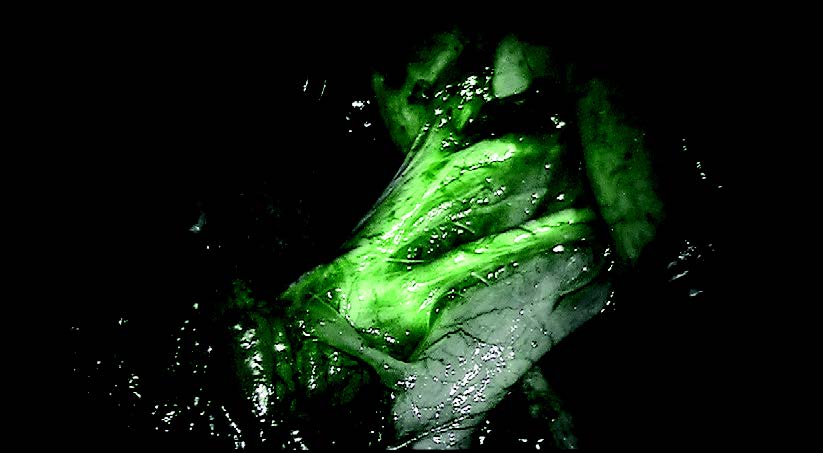"Firefly Glow" Allows Surgeons to See Better during Surgery
Covenant Center for Advanced Robotic Surgery and Dr. Sujal Patel, First in the State to Utilize FireFly Technology with Single-Incision Gallbladder Removal

In 2012, Covenant Center for Advanced Robotic Surgery made headlines for performing the first single-incision gallbladder removal in the region. That procedure just became more advanced.
Imagine the neon green glow of a firefly. Next, envision that same florescent color navigating a surgeon through tissue and visualizing blood flow during surgery. The latest in Covenant’s da Vinci capabilities is just that.
In the simplest form, iodine is injected into the patient before surgery and travels throughout the body. With the switch of a button, the surgeon’s vision goes from high-definition, to high-definition plus florescent lighting, showing the flow of blood real-time. In addition to providing the ability to view blood flow through vessels and tissue, an expanded use now includes real-time imaging of bile ducts (cystic duct, common bile duct and common hepatic duct).
Covenant is home to two da Vinci Si Surgical Systems. The system has integrated fluorescence imaging capability to provide current, image-guided identification of key anatomical landmarks using near-infrared technology. The firefly glow, or “fluorescence imaging,” allows surgeons to see and assess anatomy better than the naked eye, further enhancing the vision, precision and control of minimally invasive da Vinci surgery.
Dr. Sujal Patel, MD, FACS was the first surgeon in the State of Michigan to use this technology on a single-site gallbladder removal, where the patient’s gallbladder was removed through one small incision in the abdomen. He says, “Firefly gives us the ability to visualize the biliary system (organs and ducts) in a completely different way; visualization with the robot is second to none.”
“This technique will now be standard for my patients. There is less need for an advanced cholangiogram, or imaging of the bile ducts via x-ray, because we can see it real-time. This helps reduce exposure to additional lifetime radiation, no matter how minimal it is.”
As Dr. Patel points out, “Covenant is not a small, community based hospital anymore; it is a tertiary referral center and the experienced surgical team supporting the physicians is key. We go through education together and have the same team routinely so we can anticipate needs. Covenant has invested in this technology. We [physicians] don’t get to charge more to perform cases robotically. The robot is an instrument, it doesn’t make a better surgeon, but it helps a good surgeon do a case better and safer for the patient.”